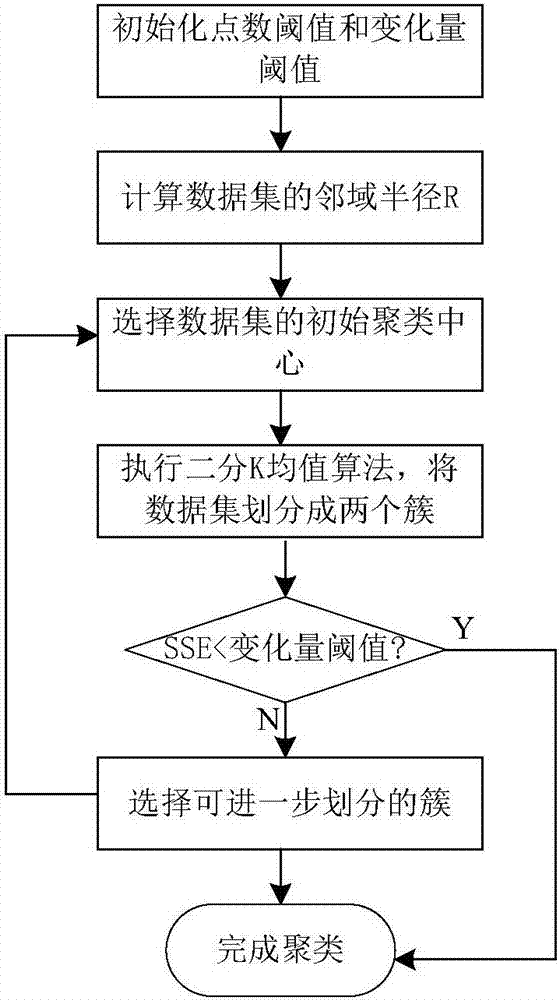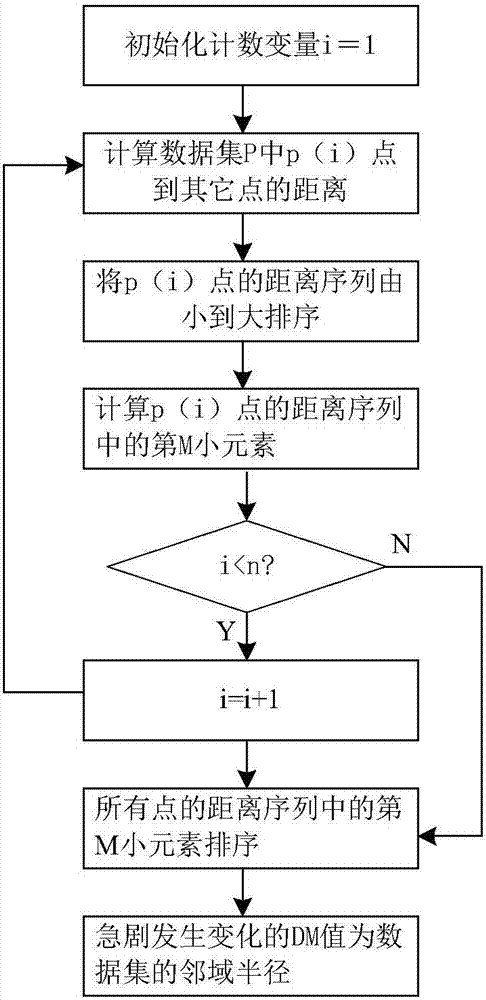Bisecting K-means algorithm based on density dividing principle
A K-means and algorithm technology, applied in the field of binary K-means clustering based on the density division criterion, can solve problems such as clustering quality degradation, improve clustering accuracy, and overcome the effect of not being able to remove noise points
- Summary
- Abstract
- Description
- Claims
- Application Information
AI Technical Summary
Problems solved by technology
Method used
Image
Examples
Embodiment Construction
[0032] The present invention will be further described below in conjunction with the accompanying drawings.
[0033] Such as figure 1 As shown, two clusters of different shapes are shown. According to the traditional "sse minimization division criterion", cluster B must be selected for further division. However, we can clearly perceive that it is cluster A that needs to be further divided instead of Cluster B, if cluster B is selected for division, it will cause the loss of clustering accuracy. This is the problem that the "sse minimization partition criterion" mentioned above is not sensitive to the cluster shape.
[0034] Such as figure 2 As shown, a binary K-means algorithm based on the density division criterion disclosed in the embodiment of the present invention includes the following steps:
[0035] 1) Initialize the point threshold M and the variation threshold δ, where M represents the number of points that should be included in the core point neighborhood at leas...
PUM
 Login to View More
Login to View More Abstract
Description
Claims
Application Information
 Login to View More
Login to View More - R&D
- Intellectual Property
- Life Sciences
- Materials
- Tech Scout
- Unparalleled Data Quality
- Higher Quality Content
- 60% Fewer Hallucinations
Browse by: Latest US Patents, China's latest patents, Technical Efficacy Thesaurus, Application Domain, Technology Topic, Popular Technical Reports.
© 2025 PatSnap. All rights reserved.Legal|Privacy policy|Modern Slavery Act Transparency Statement|Sitemap|About US| Contact US: help@patsnap.com



